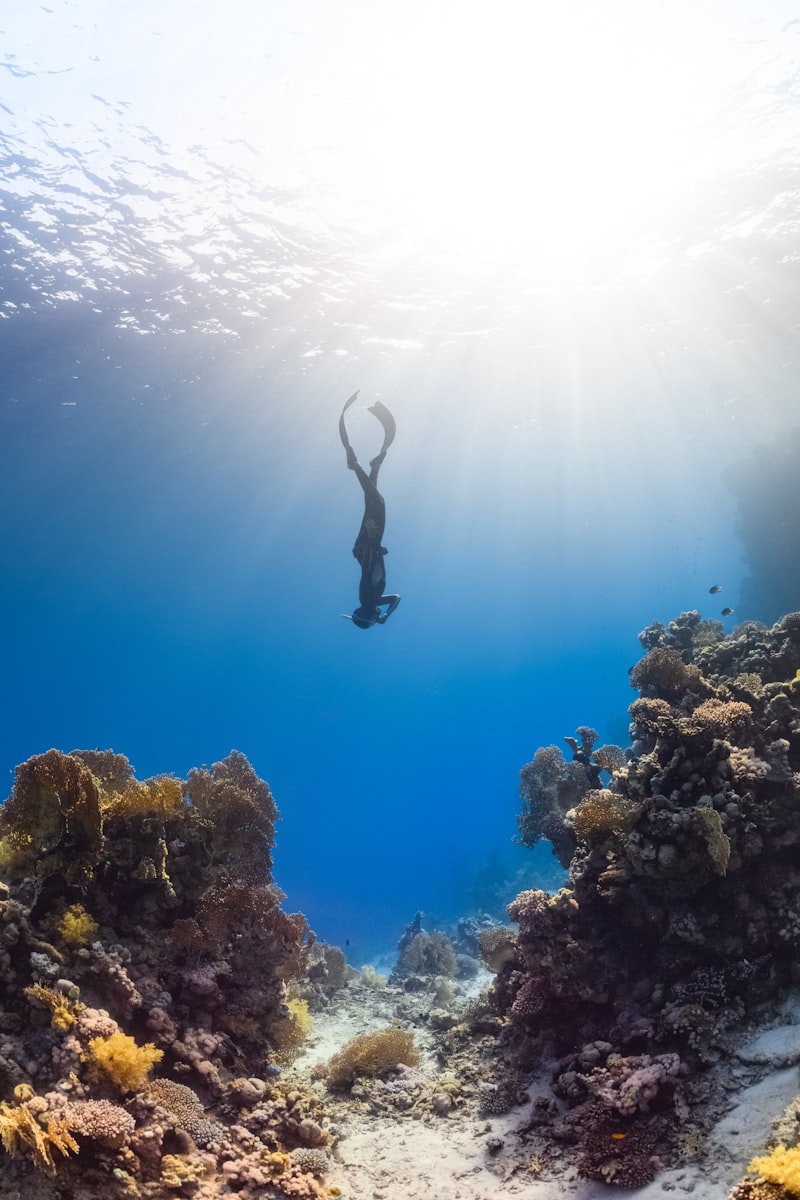At the heart of this symbiotic relationship are zooxanthellae, photosynthetic algae that live within coral tissues. These tiny algae not only give coral its vibrant colors but also provide essential nutrients through photosynthesis. In return, corals offer shelter and compounds needed for algae growth. This mutual exchange supports the reef’s productivity and resilience against environmental stressors like rising sea temperatures.
Beyond zooxanthellae, corals host a diverse community of bacteria that play crucial roles in nutrient cycling, disease resistance, and even chemical signaling. These bacteria help corals adapt to changing conditions and ward off pathogens, highlighting their pivotal role in reef health.
The intricate web of interactions within microbial communities also extends to fungi and viruses, each contributing uniquely to the coral ecosystem’s dynamics. Fungi, for instance, can form associations with corals, aiding in nutrient acquisition and disease prevention. Meanwhile, viruses, though often seen as detrimental, can influence microbial populations, potentially shaping the reef’s overall health and resilience.
Understanding microbial symbiosis in coral reefs is essential for conservation efforts. As these ecosystems face threats from climate change, pollution, and overfishing, preserving microbial diversity becomes critical. By safeguarding these tiny partners, scientists hope to ensure the long-term survival of coral reefs and the myriad species that depend on them.
In essence, microbial symbiosis in coral reefs reveals nature’s intricate interconnectedness, where even the smallest organisms play vital roles in maintaining the reef’s health and biodiversity. As we delve deeper into these relationships, we uncover new insights that could guide future conservation strategies and foster awe for the unseen world beneath the waves.
Secrets of Survival: Unveiling the Hidden World of Coral Reef Microbes
Coral reef microbes are akin to the unsung heroes of the underwater world. They are tiny, single-celled organisms that live in massive communities within the coral structures. These microbes include bacteria, archaea, fungi, and viruses, each playing a unique part in maintaining the delicate balance of the reef ecosystem.
One of their primary roles is in nutrient cycling. Coral reefs, despite appearing to be barren landscapes, are actually nutrient-rich hubs. Microbes break down organic matter, recycling nutrients like nitrogen and phosphorus, which are vital for the growth of corals and other marine life. They essentially act as the reef’s natural cleaners, ensuring that waste materials are efficiently processed and reused.
But it doesn’t end there. Coral reef microbes also provide protection against diseases. Just like how our bodies have beneficial bacteria that help fight off harmful pathogens, corals rely on specific microbial communities to ward off infections. These microbial defenders produce antimicrobial compounds that act as natural antibiotics, safeguarding the corals from diseases that could otherwise devastate entire reef systems.
Moreover, these tiny organisms are adaptability masters. They can thrive in environments that would be inhospitable to many other life forms due to extreme conditions such as high salinity, low oxygen levels, and intense sunlight. This resilience is crucial for coral reefs facing increasing threats from climate change, pollution, and human activities.
In essence, while coral reefs dazzle us with their beauty, it’s the intricate world of microbes working behind the scenes that ensures their survival. Next time you snorkel over a reef or marvel at underwater documentaries, remember that beneath the surface, a vibrant and dynamic microbial community is at work, sustaining one of the Earth’s most diverse ecosystems.
Coral Guardians: How Microbial Partnerships Shield Reefs from Climate Change
In essence, coral reefs are not just calcified structures; they are intricate communities where corals and microorganisms engage in symbiotic relationships. One such partnership involves algae known as zooxanthellae, which live within coral tissues. These algae harness sunlight to produce energy through photosynthesis, providing corals with essential nutrients and contributing to the vibrant colors of the reefs.
Beyond zooxanthellae, coral reefs harbor a diverse array of bacteria that form complex networks within the coral microbiome. These microbial communities help corals in various ways, from protecting against pathogens to aiding in nutrient cycling and even contributing to the resilience of corals under stress.

Climate change poses a significant threat to coral reefs, primarily through rising sea temperatures and ocean acidification. These stressors can disrupt the delicate balance within coral ecosystems, leading to coral bleaching—a phenomenon where corals expel their symbiotic algae due to stress, resulting in the loss of vibrant colors and increased susceptibility to mortality.
However, research has shown that certain microbial partnerships can bolster coral resilience against climate stressors. Some bacteria produce compounds that shield corals from pathogens or help them recover faster from bleaching events. Understanding and harnessing these microbial interactions could potentially aid conservation efforts aimed at protecting coral reefs in a changing climate.
As scientists delve deeper into the intricate relationships between corals and their microbial guardians, there is optimism that leveraging these partnerships could provide innovative solutions for reef restoration and conservation. By nurturing these natural alliances, we can strive towards preserving these invaluable ecosystems for future generations to marvel at and enjoy.
The Power Below: Microbial Heroes Keeping Coral Reefs Vibrant
Have you ever wondered about the hidden champions that ensure the stunning vibrancy of coral reefs? Enter the microbial heroes, the unsung saviors working tirelessly beneath the waves. These microscopic organisms play a crucial role in maintaining the health and resilience of coral ecosystems.
Coral reefs, often called the rainforests of the sea, are home to a staggering array of marine life. However, their beauty and biodiversity are not just a product of chance. Beneath the surface, a complex network of bacteria, archaea, and fungi form partnerships with corals, creating what scientists call coral holobionts. These relationships are essential for the survival of corals, helping them withstand environmental stressors such as rising ocean temperatures and pollution.
One of the key roles of these microbial communities is in nutrient cycling. They help recycle essential nutrients like nitrogen and phosphorus, which are vital for coral growth and productivity. Additionally, certain microbes have been found to produce compounds that protect corals from disease, acting like natural antibiotics.
Imagine these microbes as tiny architects, building the foundation upon which coral reefs thrive. Their interactions not only benefit corals but also contribute to the overall health of the reef ecosystem, supporting countless other marine species that depend on coral reefs for food and shelter.
In recent years, researchers have begun to unlock the secrets of these microbial communities, understanding their resilience and adaptability. This knowledge is crucial as coral reefs face unprecedented challenges from climate change and human activities.
Next time you marvel at the kaleidoscope of colors in a coral reef, remember the microbial heroes working quietly below, ensuring these vibrant ecosystems continue to inspire and sustain life in our oceans.
Invisible Allies: Microbial Symbiosis Key to Coral Reef Resilience
Microbial symbiosis refers to a mutually beneficial relationship where microbes and corals exchange services in a harmonious partnership. Corals provide a habitat rich in nutrients and shelter for a diverse array of microorganisms, while the microbes, in turn, offer vital services such as nutrient cycling, disease resistance, and even aiding in the calcification process that builds coral skeletons.
One of the most remarkable aspects of this partnership is its role in coral reef resilience. As coral reefs face increasing threats from climate change, pollution, and ocean acidification, microbial symbiosis emerges as a critical factor in their ability to adapt and survive. These tiny organisms help corals cope with stressors by providing supplementary nutrients and strengthening their immune systems. They act as guardians, fortifying the reefs against diseases that can devastate coral populations.

Furthermore, microbial symbiosis exemplifies nature’s interconnectedness and resilience. It’s akin to a delicate dance where each partner plays a distinct role in maintaining the health and functionality of the coral ecosystem. This relationship underscores the complexity of coral reefs, highlighting how even the smallest organisms can have profound impacts on entire ecosystems.
In essence, understanding microbial symbiosis in coral reefs isn’t just about appreciating the invisible helpers—it’s about recognizing their pivotal role in safeguarding these biodiverse marine environments. As scientists delve deeper into this symbiotic relationship, they uncover new insights into how we can better conserve and protect coral reefs for future generations.
Frequently Asked Questions
What are examples of microbial partners in coral symbiosis?
This FAQ provides examples of microbial partners involved in coral symbiosis. It succinctly lists specific organisms such as Symbiodinium (dinoflagellates) and diazotrophic bacteria that play crucial roles in nutrient cycling and coral health.
How do microbes benefit coral reefs?
Learn how microbes benefit coral reefs in this concise FAQ. Discover the pivotal roles these microorganisms play in maintaining coral health, from nutrient cycling to disease resistance. Explore their contributions to reef resilience and ecological balance.
What threats affect microbial symbiosis in coral reefs?
Learn about the threats impacting microbial symbiosis in coral reefs, including ocean warming, pollution, and overfishing. These factors can disrupt the delicate balance between corals and their beneficial microbes, leading to coral bleaching and reduced reef resilience.
What is microbial symbiosis in coral reefs?
Microbial symbiosis in coral reefs refers to the mutually beneficial relationship between corals and various microorganisms, including algae and bacteria. These microorganisms provide essential nutrients and contribute to coral health and growth, while corals provide a habitat and nutrients for their microbial partners. This symbiotic relationship is crucial for the resilience and biodiversity of coral reef ecosystems.
How does microbial symbiosis help coral reef resilience?
Learn how microbial symbiosis enhances coral reef resilience by supporting coral health and aiding in stress tolerance. Discover how these mutually beneficial relationships between corals and microorganisms contribute to ecosystem stability and adaptation to environmental changes.



